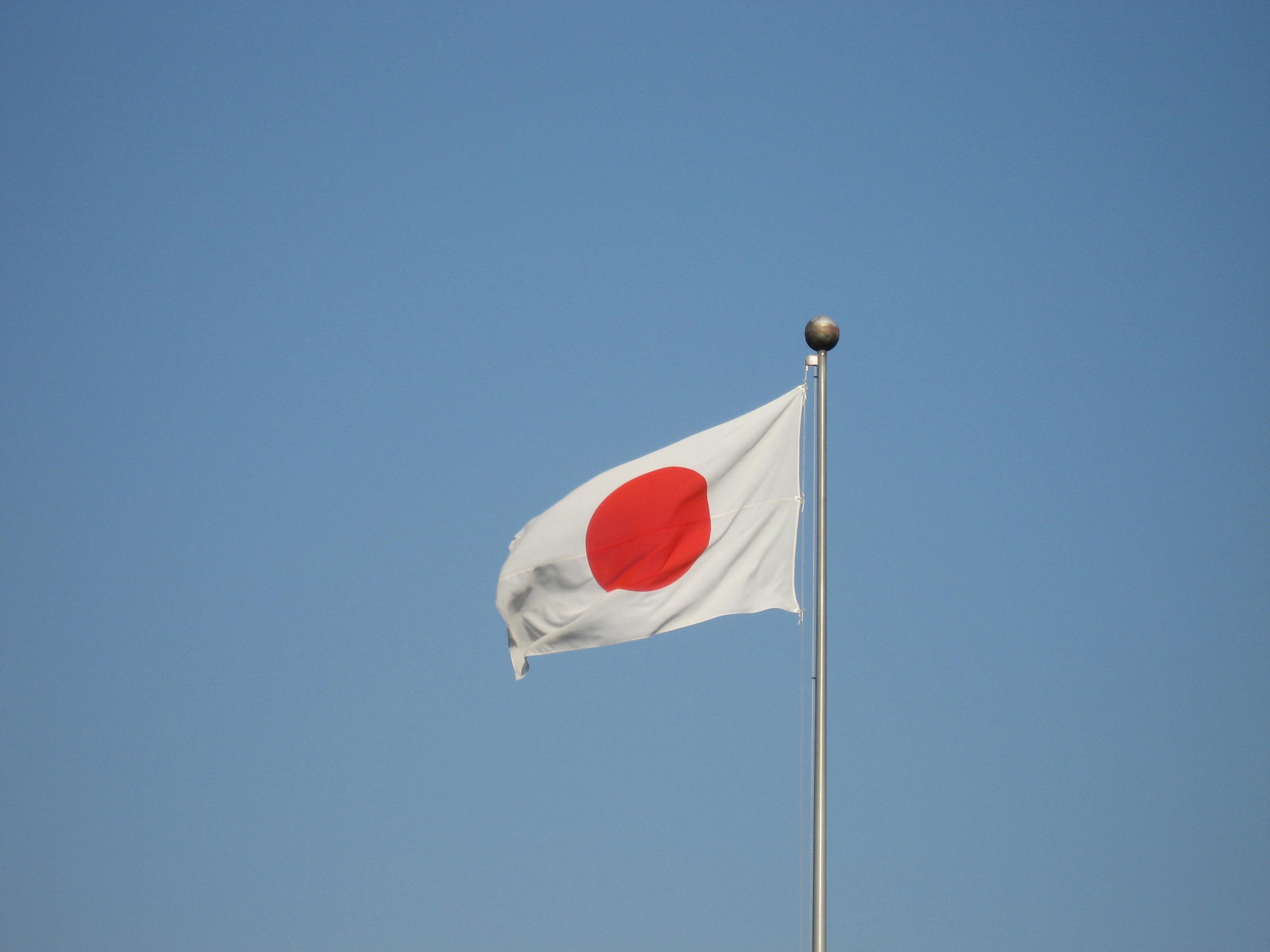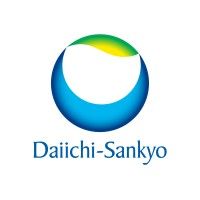预约演示
更新于:2025-08-02
Bemremeran
更新于:2025-08-02
概要
基本信息
药物类型 预防性疫苗、mRNA疫苗 |
别名 Coronavirus(SARS-CoV-2)RNA Vaccine、mRNA COVID-19 Vaccine (Daiichi Sankyo)、Tegrenmeran + [7] |
作用方式 抑制剂 |
作用机制 SARS-CoV-2 S protein抑制剂(冠状病毒刺突糖蛋白抑制剂) |
在研适应症 |
非在研适应症- |
非在研机构- |
权益机构- |
最高研发阶段批准上市 |
首次获批日期 日本 (2023-08-02), |
最高研发阶段(中国)- |
特殊审评- |
登录后查看时间轴
结构/序列
Sequence Code 1191632797

来源: *****
关联
9
项与 Bemremeran 相关的临床试验JPRN-jRCT2031240151
Use-result survey of Daichirona for intramuscular injection
开始日期2024-09-20 |
申办/合作机构- |
JPRN-jRCT2031230424
A phase III, randomized, active-comparator, observer-blind, non-inferiority study to demonstrate the immunogenicity and safety of DS-5670d (monovalent: omicron XBB.1.5) in adults and children aged 12 years and older
开始日期2024-01-09 |
申办/合作机构- |
JPRN-jRCT2031230423
A phase III, randomized, active-comparator, observer-blind, non-inferiority study to demonstrate the immunogenicity and safety of DS-5670d (monovalent: omicron XBB.1.5) in children 5 through 11 years of age
开始日期2024-01-05 |
申办/合作机构- |
100 项与 Bemremeran 相关的临床结果
登录后查看更多信息
100 项与 Bemremeran 相关的转化医学
登录后查看更多信息
100 项与 Bemremeran 相关的专利(医药)
登录后查看更多信息
51
项与 Bemremeran 相关的文献(医药)2024-12-01·British Journal of Pharmacology
The PARP inhibitor rucaparib blocks SARS‐CoV‐2 virus binding to cells and the immune reaction in models of COVID‐19
Article
作者: Juhász, Péter ; Curtin, Nicola J. ; Hoch, Nicolas C. ; Bánfai, Krisztina ; Mózner, Orsolya ; Bóvári‐Biri, Judit ; Bajusz, Dávid ; Pongrácz, Judit E. ; Szalai, Tibor Viktor ; Bai, Péter ; Batta, Gyula ; Méhes, Gábor ; Vaskó, Dorottya ; Hirsch, Edit ; Tőzsér, József ; Mahdi, Mohamed ; Jakab, Ferenc ; Tóth, Attila ; Keserű, György M. ; Papp, Henrietta ; Kuczmog, Anett ; Petri, László ; Bohus, Péter ; Madai, Mónika ; Tóth, Emese ; Sipos, Adrienn ; Helyes, Zsuzsanna ; Kemény, Ágnes ; Russo, Lilian Cristina
Abstract:
Background and Purpose:
To date, there are limited options for severe Coronavirus disease 2019 (COVID‐19), caused by SARS‐CoV‐2 virus. As ADP‐ribosylation events are involved in regulating the life cycle of coronaviruses and the inflammatory reactions of the host; we have, here, assessed the repurposing of registered PARP inhibitors for the treatment of COVID‐19.
Experimental Approach:
The effects of PARP inhibitors on virus uptake were assessed in cell‐based experiments using multiple variants of SARS‐CoV‐2. The binding of rucaparib to spike protein was tested by molecular modelling and microcalorimetry. The anti‐inflammatory properties of rucaparib were demonstrated in cell‐based models upon challenging with recombinant spike protein or SARS‐CoV‐2 RNA vaccine.
Key Results:
We detected high levels of oxidative stress and strong PARylation in all cell types in the lungs of COVID‐19 patients, both of which negatively correlated with lymphocytopaenia. Interestingly, rucaparib, unlike other tested PARP inhibitors, reduced the SARS‐CoV‐2 infection rate through binding to the conserved 493–498 amino acid region located in the spike‐ACE2 interface in the spike protein and prevented viruses from binding to ACE2. In addition, the spike protein and viral RNA‐induced overexpression of cytokines was down‐regulated by the inhibition of PARP1 by rucaparib at pharmacologically relevant concentrations.
Conclusion and Implications:
These results point towards repurposing rucaparib for treating inflammatory responses in COVID‐19.
2024-11-20·CHINESE MEDICAL JOURNAL
Severe acute respiratory syndrome coronavirus 2-specific T-cell responses are induced in people living with human immunodeficiency virus after booster vaccination
Article
作者: Duan, Junyi ; Huang, Tao ; Li, Yongzheng ; Su, Bin ; Chai, Xiaoran ; Zhang, Guanghui ; Ma, Zhenglai ; Zhang, Tong ; Zhang, Xin ; Jin, Junyan ; Wang, Xiuwen ; Wu, Hao ; Cao, Yunlong
ABSTRACT:
Background::
T-cell-mediated immunity is crucial for the effective clearance of viral infection, but the T-cell-mediated immune responses that are induced by booster doses of inactivated severe acute respiratory syndrome coronavirus 2 (SARS-CoV-2) vaccines in people living with human immunodeficiency virus (PLWH) remain unclear.
Methods::
Forty-five PLWH who had received antiretroviral therapy (ART) for more than two years and 29 healthy controls (HCs) at Beijing Youan Hospital were enrolled to assess the dynamic changes in T-cell responses between the day before the third vaccine dose (week 0) and 4 or 12 weeks (week 4 or week 12) after receiving the third dose of inactivated SARS-CoV-2 vaccine. Flow cytometry, enzyme-linked immunospot (ELISpot), and multiplex cytokines profiling were used to assess T-cell responses at the three timepoints in this study.
Results::
The results of the ELISpot and activation-induced marker (AIM) assays showed that SARS-CoV-2-specific T-cell responses were increased in both PLWH and HCs after the third dose of the inactivated SARS-CoV-2 vaccine, and a similar magnitude of immune response was induced against the Omicron (B.1.1.529) variant compared to the wild-type strain. In detail, spike-specific T-cell responses (measured by the ELISpot assay for interferon γ [IFN-γ] release) in both PLWH and HCs significantly increased in week 4, and the spike-specific T-cell responses in HCs were significantly stronger than those in PLWH 4 weeks after the third vaccination. In the AIM assay, spike-specific CD4+ T-cell responses peaked in both PLWH and HCs in week 12. Additionally, significantly higher spike-specific CD8+ T-cell responses were induced in PLWH than in HCs in week 12. In PLWH, the release of the cytokines interleukin-2 (IL-2), tumour necrosis factor-alpha (TNF-α), and IL-22 by peripheral blood mononuclear cells (PBMCs) that were stimulated with spike peptides increased in week 12. In addition, the levels of IL-4 and IL-5 were higher in PLWH than in HCs in week 12. Interestingly, the magnitude of SARS-CoV-2-specific T-cell responses in PLWH was negatively associated with the extent of CD8+ T-cell activation and exhaustion. In addition, positive correlations were observed between the magnitude of spike-specific T-cell responses (determined by measuring IFN-γ release by ELISpot) and the amounts of IL-4, IL-5, IL-2 and IL-17F.
Conclusions::
Our findings suggested that SARS-CoV-2-specific T-cell responses could be enhanced by the booster dose of inactivated COVID-19 vaccines and further illustrate the importance of additional vaccination for PLWH.
2024-11-01·VACCINE
Maternal-infant transfer of SARS-CoV-2 antibodies following vaccination in pregnancy: A prospective cohort study
Article
作者: Marquez, C ; Andrade, J ; Jassem, A ; Tanunliong, G ; Sekirov, I ; Av-Gay, G ; Korchinski, I ; McClymont, E ; Elwood, C ; Sadarangani, M ; Krajden, M ; Morshed, M ; Money, D
OBJECTIVES:
To measure and evaluate the impact of receiving severe acute respiratory syndrome coronavirus 2 (SARS-CoV-2) vaccines in pregnancy on immunoglobulin G (IgG) and immunoglobulin A (IgA) titres in maternal and infant samples.
DESIGN:
Prospective cohort study.
SETTING:
Tertiary obstetric centre.
POPULATION OR SAMPLE:
52 pregnant women who received one or more SARS-CoV-2 vaccine doses during pregnancy and their neonates.
METHODS:
IgG and IgA concentrations against SARS-CoV-2 antigens were measured from samples collected at delivery and 4-6 weeks postpartum and compared using Spearman correlations.
MAIN OUTCOME MEASURES:
Maternal and infant IgG and IgA titres in response to vaccination and infection in pregnancy.
RESULTS:
In maternal serum collected at delivery, participants without evidence of prior infection who received 3 + doses of a SARS-CoV-2 vaccine had higher Anti-Spike (S) IgG geometric mean concentrations (log10 AU/mL)(GMC) than those who received 2 doses (3 + Doses = 5.00, 2 Doses = 4.60, p = 0.08). The differences in IgG Anti-S GMC were statistically significant in cord serum, and in postpartum samples of maternal serum, infant serum and breast milk (Cord GMCs: 3 + Doses = 5.32, 2 Doses = 4.98, p < 0.05; Postpartum maternal serum GMCs: 3 + Doses = 5.25, 2 Doses = 4.57, p < 0.001; Postpartum infant serum GMCs: 3 + Doses = 5.10, 2 Doses = 4.72, p = 0.03; Postpartum breast milk GMCs: 3 + Doses = 2.61, 2 Doses = 1.94, p < 0.0001). Among participants with 3 + Doses, those with evidence of SARS-CoV-2 infection had statistically significant higher anti-S IgG GMCs than those without prior infection (Maternal serum at delivery: SARS-CoV-2+=5.65, SARS-CoV-2-=5.00, p = 0.004; Cord: SARS-CoV-2+=5.68, SARS-CoV-2-=5.32, p = 0.02; Postpartum maternal serum: SARS-CoV-2+=5.66, SARS-CoV-2-=5.25, p < 0.001; postpartum infant serum: SARS-CoV-2+=5.50, SARS-CoV-2-=5.10, p = 0.003; Postpartum breast milk: SARS-COV-2+=3.25, SARS-COV-2-=2.61, p = 0.009). Significant positive correlations were found for anti-S IgG titres between paired maternal and infant samples at delivery and postpartum (Delivery: R = 0.91, p < 0.001; postpartum: R = 0.86, p < 0.001).
CONCLUSIONS:
Receipt of a SARS-CoV-2 vaccine and SARS-CoV-2 infection elicit strong IgG and IgA antibody responses in pregnant women with evidence of transplacental transfer to the fetus.
18
项与 Bemremeran 相关的新闻(医药)2025-06-05
关注并星标CPHI制药在线RNA疗法正迅速成为现代医学中最具变革性的治疗策略之一。从反义寡核苷酸(ASO)和小干扰RNA(siRNA)等精准调控基因表达的工具,到mRNA疫苗和肿瘤免疫疗法等前沿应用,RNA技术已在多个疾病领域展现出巨大潜力。近年来,随着递送系统、生物偶联技术和修饰化学的不断进步,RNA疗法的临床管线迅速扩展,涵盖了罕见病、神经系统疾病、代谢性疾病以及肿瘤等多个领域。目前,RNA疗法的临床开发全景涵盖了ASO、siRNA、mRNA、核酸适体(aptamer)等主要技术路径,在不同适应症中布局广泛,关键企业的研发动态频繁,已获批上市的代表性药物不断涌现。本文总结了现有管线和上市的 RNA疗法,将这一新兴领域的开发全景呈现出来。1. ASO类 RNA资产梳理 1.1 I期ASO资产 • Praxis ASO资产 :Elsunersen(PRAX-222) 靶点:SCN2A基因 适应症:由SCN2A基因的功能获得性突变引起的早发性SCN2A发育性和癫痫性脑病。 • PYC Therapeutics ASO资产:VP-001 靶点:PRPF31基因 适应症:由PRPF31基因突变引起的视网膜色素变性11型 ASO资产:PYC-001 靶点:OPA1基因 适应症:由OPA1基因突变引起的常染色体显性视神经萎缩(ADOA) ASO资产:PYC-003 靶点:PKD1基因 适应症:常染色体显性多囊肾病(ADPKD) • Bio-Path Holdings ASO资产:BP1002(Liposomal Grb2 ASO) 适应症:急性髓性白血病(AML)、B细胞淋巴瘤(B-cell lymphoma) 技术特点:使用独特的中性脂质体递送系统(DNAbilize® Platform)递送ASO。1.2 II期ASO资产 • Stoke Therapeutics ASO资产:Zorevunersen(STK-001) 靶点 :SCN1A基因 适应症:Dravet综合征(一种严重癫痫) ASO资产 :STK-002 靶点:OPA1基因 适应症:常染色体显性视神经萎缩(ADOA) • Entrada Therapeutics ASO资产:ENTR-601-44 适应症:Duchenne肌营养不良(DMD) 靶点 :DMD中的Exon 44跳跃 技术特点:使用Entrada独有的分子穿透技术(Endosomal Escape Vehicle, EEV)提高细胞内递送效率。 ASO资产:ENTR-601-45 靶点:DMD基因的外显子45(Exon 45) 适应症:适用于外显子45跳跃的杜氏肌营养不良症(DMD)患者 • Dyne Therapeutics ASO资产:DYNE-251 适应症:Duchenne肌营养不良(DMD),针对DMD中的Exon 51跳跃。 技术特点:使用抗体-寡核苷酸结合平台(FORCE platform)进行肌肉组织特异性递送。 ASO资产 :DYNE-101 适应症:肌强直性营养不良症1型(DM1) 靶点:DMPK基因的异常CTG重复序列 • Ribomic ASO资产:Umedaptanib Pegol(原RBM-007,严格来说是核酸适体aptamer,而不是典型ASO) 靶点 :FGF2(成纤维细胞生长因子2)。 适应症:湿性年龄相关性黄斑变性(wAMD),软骨发育不全症 • Wave Life Sciences ASO资产: WVE-N531:DMD(杜氏肌营养不良症)治疗,靶向Exon 53跳跃 WVE-003:亨廷顿舞蹈症(Huntington's Disease, HD),靶向HTT基因突变 • PepGen ASO资产:PGN-EDO51 适应症:Duchenne肌营养不良(DMD) 技术特点:结合增强型细胞穿透肽(Enhanced Delivery Oligonucleotide, EDO)技术,提高ASO进入肌肉细胞的效率。 ASO资产 :PGN-EDODM1 靶点:DMPK基因的异常CUG重复序列 适应症:肌强直性营养不良症1型(DM1) • 罗氏 ASO资产 :Tominersen(RG6042) 靶点:Huntingtin(HTT)基因 适应症:亨廷顿病(Huntington's Disease, HD) ASO资产 :IONIS-FB-LRx(RO7434656 / RG6299) 靶点:补体因子B(Factor B) 适应症:IgA肾病(IgAN) • Ultragenyx ASO资产 :GTX-102 靶点:UBE3A-AS(UBE3A反义转录本) 适应症:天使综合征(Angelman Syndrome)1.3 ASO类3期资产 • Oncotelic Therapeutics ASO资产:OT-101(也叫Trabedersen) 靶点:转化生长因子β2(TGF-β2) 适应症:胶质母细胞瘤(GBM)、胰腺癌、恶性黑色素瘤 机制:抑制TGF-β2,有望减轻肿瘤免疫抑制,增强抗肿瘤免疫反应 • 阿斯利康 ASO资产:ION449(亦称AZD8233),与Ionis合作开发的ASO疗法 靶点:PCSK9(一种影响低密度脂蛋白胆固醇LDL-C水平的蛋白质) 适应症:高胆固醇血症(hypercholesterolemia) 备注:主要竞争对手包括小分子抑制剂和PCSK9单抗(如Repatha、Praluent) • GSK ASO资产:bepirovirsen 靶点:乙型肝炎病毒(HBV)的前基因组RNA和mRNA 适应症:慢性乙型肝炎(chronic hepatitis B, CHB),通过抑制HBV基因表达,帮助病毒清除或实现功能性治愈(functional cure)。 • 诺华 ASO资产:Pelacarsen 靶点:LPA基因(编码脂蛋白(a)) 作用机制:Pelacarsen通过抑制LPA基因的mRNA,降低血液中脂蛋白(a)(Lp(a))水平,从而降低心血管疾病风险。Lp(a)是目前被认为的重要但尚无针对性治疗手段的心血管风险因子。 适应症:主要用于治疗动脉粥样硬化性心血管疾病高危患者中,血脂异常(特别是Lp(a)升高)的情况。 临床阶段:正在进行III期临床试验(Lp(a)HORIZON)。Pelacarsen可能成为首个专门针对Lp(a)升高治疗获批的药物。1.4 ASO类上市药物 • 渤健 Spinraza(nusinersen) 靶点:SMN2前体mRNA(促进功能性SMN蛋白表达) 适应症:脊髓性肌萎缩症(SMA) 获批时间:2016年12月(美国FDA批准) 备注:全球首个获批的SMA治疗药物。由Ionis开发,Biogen负责商业化。 • Sarepta Therapeutics Exondys 51(eteplirsen) 靶点:DMD基因的Exon 51 适应症:Duchenne肌营养不良(DMD) 获批时间:2016年9月(FDA加速批准) Vyondys 53(golodirsen) 靶点:DMD基因的Exon 53 适应症:DMD 获批时间:2019年12月 Amondys 45(casimersen) 靶点:DMD基因的Exon 45 适应症:DMD 获批时间:2021年2月(FDA加速批准) • Ionis Pharmaceuticals Tegsedi(inotersen) 靶点:TTR(转甲状腺素蛋白) 适应症:遗传性转甲状腺素蛋白淀粉样变性多发性神经病(hATTR-PN) 获批时间 :2018年10月(FDA,EMA批准) Waylivra(volanesorsen) 靶点:APOC3(载脂蛋白C-III) 适应症:家族性乳糜微粒血症综合征(FCS) 获批时间:2019年5月(欧洲EMA批准;未获美国FDA批准) • NS Pharma Viltepso(viltolarsen) 靶点:DMD基因的Exon 53 适应症:Duchenne肌营养不良(DMD) 获批时间:2020年8月(FDA加速批准)2.RNAi类 RNA资产2.1 I期RNAi资产 • Aligos Therapeutics RNAi资产:ALG-125755 靶点:乙型肝炎病毒(HBV)RNA 适应症:慢性乙型肝炎(CHB) • Regulus Therapeutics RNAi资产:RGLS8429 靶点:microRNA-17(miR-17家族) 适应症:常染色体显性多囊肾病(ADPKD) • Phio Pharmaceuticals RNAi资产:PH-762 靶点:程序性死亡受体1(PD-1) 适应症:癌症免疫疗法(通过下调T细胞表面PD-1,增强免疫杀伤) 技术特点:采用其自有的INTASYL✓平台,优化了siRNA的稳定性和局部递送。 • TransCode Therapeutics RNAi资产:VIR-2218 TTX-MC138 靶点:microRNA-10b(miR-10b) 适应症:针对转移性实体肿瘤(如乳腺癌、胰腺癌、脑肿瘤等) 技术特点:使用纳米颗粒系统高效递送siRNA药物,特别适合针对深部转移灶。2.2 II期RNAi资产 • Arbutus Biopharma RNAi资产:AB-729 靶点:乙型肝炎病毒(HBV)表面抗原(HBsAg) 适应症:慢性乙型肝炎(CHB) 备注:AB-729是Arbutus当前最重要的核心资产之一。 • OliX Pharmaceuticals RNAi资产:OLX703A 靶点:HBV病毒相关RNA 适应症:慢性乙型肝炎(CHB) 机制:抑制HBV病毒蛋白表达 • Silence Therapeutics RNAi资产:SLN360 靶点:LPA基因(编码脂蛋白Lp(a)) 适应症:高脂蛋白(a)血症(Lp(a)过高相关的心血管疾病) 机制:通过降低血液中Lp(a)水平,减少动脉粥样硬化风险。 备注:SLN360是Silence在心血管RNA疗法领域的主力项目。 • Sirnaomics RNAi资产:STP705 靶点:双靶点siRNA药物,靶向TGF-β1和COX-2。 适应症:瘢痕治疗(皮肤纤维化)、非黑色素瘤皮肤癌(如基底细胞癌、鳞状细胞癌) 机制:抑制纤维化、降低肿瘤微环境免疫抑制。 备注:Sirnaomics的特点是双靶点siRNA联合递送。 • GSK RNAi资产:GSK4532990 靶点:靶向HSD17B13基因 适应症:代谢功能障碍相关脂肪性肝炎(MASH) • 礼来 RNAi项目:LY3561774 靶点:SERPINA1基因 适应症:α1-抗胰蛋白酶缺乏症(AATD) 机制 :降低异常α1-抗胰蛋白酶(AAT)积聚 • VIR Biotechnology RNAi项目:VIR-2218 靶点 : HBV RNA 适应症:慢性乙型肝炎(CHB)。 机制:抑制HBV表面抗原表达 • 罗氏 RNAi资产:Zilebesiran 靶点 :肝脏表达的血管紧张素原(AGT)基因。 适应症:高血压,特别是高心血管风险患者。2.3 III期RNAi资产 • Arrowhead Pharmaceuticals RNAi资产:ARO-APOC3 靶点 :APOC3(载脂蛋白C-III), 适应症:高甘油三酯血症和罕见脂代谢异常 • 武田 RNAi资产:Fazirsiran 靶点:SERPINA1(编码α1-抗胰蛋白酶) 适应症:α1-抗胰蛋白酶缺乏症(AATD)引起的肝病 • 安进 RNAi资产:Olpasiran 靶点:LPA基因(脂蛋白(a)) 适应症:高脂蛋白(a)血症及其引发的心血管疾病风险 备注:这是一款非常重磅的RNAi项目,对心血管领域意义重大。 • Avidity Biosciences RNAi资产:AOC 1001 靶点:DMPK基因(导致肌强直性营养不良症1型DM1) 适应症:肌强直性营养不良症1型(DM1) 技术特点:AOC(Antibody Oligonucleotide Conjugate,抗体-寡核苷酸偶联体),用于肌肉靶向递送siRNA。 • 赛诺菲 RNAi资产:Fitusiran 靶点:AT(抗凝血酶) 适应症:血友病A或B患者的出血预防 • VIR Biotechnology RNAi资产:VIR-2218 靶点:HBV RNA 适应症:慢性乙型肝炎(CHB)2.4 上市RNAi资产 • Alnylam Pharmaceuticals Alnylam是全球RNAi疗法先锋,拥有最多已上市RNAi药物。 Onpattro(Patisiran) 靶点:TTR 适应症:遗传性转甲状腺素蛋白淀粉样变性引起的多发性神经病(hATTR-PN) 批准情况:2018年FDA/EMA批准 Givlaari(Givosiran) 靶点:ALAS1 适应症:急性肝卟啉症(AHP) 批准情况:2019年FDA/EMA批准 Oxlumo(Lumasiran) 靶点:HAO1 适应症:原发性高草酸尿症1型(PH1) 批准情况:2020年FDA/EMA批准 Amvuttra(Vutrisiran) 靶点:TTR 适应症:遗传性转甲状腺素蛋白淀粉样变性引起的多发性神经病(hATTR-PN)(长效皮下注射版) 批准情况:2022年FDA批准 • 诺华 RNAi资产:Leqvio(Inclisiran) 靶点:PCSK9 适应症:高胆固醇血症,动脉粥样硬化性心血管疾病风险降低 批准情况:2020年欧洲EMA批准;2021年底美国FDA批准 • 诺和诺德 RNAi资产:Rivfloza (nedosiran) 靶点:肝脏中乳酸脱氢酶(LDH)mRNA 适应症:治疗9岁及以上、肾功能相对良好的原发性高草酸尿症1型(PH1)患者。 作用机制:抑制LDH蛋白表达,减少草酸过度生成,缓解PH1疾病过程,减少肾脏损害风险。 批准情况:2023年9月29日FDA正式批准Rivfloza上市。成为继Alnylam的Oxlumo(Lumasiran)之后,全球第二款获批用于PH1治疗的RNAi药物。3.mRNA类 RNA药物资产3.1 1期mRNA资产 • 赛诺菲 SP0237: 季节性流感 mRNA 疫苗 适应症:针对 A/H3N2 毒株的季节性流感。 SP0256 – RSV mRNA 疫苗(老年人群) 适应症:用于预防老年人群中的呼吸道合胞病毒(RSV)感染。 SP0268 – mRNA 痤疮疫苗 适应症:针对痤疮(Acne)的 mRNA 疫苗。 SP0291 – 多价呼吸道病毒 mRNA 疫苗 适应症:针对 RSV、人类偏肺病毒(hMPV)和副流感病毒 3 型(PIV3)的组合疫苗,主要用于老年人群。 沙眼衣原体(Chlamydia)mRNA 疫苗候选 适应症:预防沙眼衣原体感染,主要针对 18 至 29 岁的成人。 • Vertex mRNA资产:VX-522:用于囊性纤维化(CF)的mRNA疗法 靶点:CFTR基因(囊性纤维化跨膜电导调节因子)。 适应症:无法通过CFTR调节剂治疗的CF(囊性纤维化)患者,尤其是那些由于CFTR基因突变导致CFTR蛋白缺失的患者。 作用机制:VX-522是一种mRNA疗法,通过脂质纳米颗粒(LNP)递送CFTR mRNA至肺部细胞,促使其合成功能性CFTR蛋白,从而恢复氯离子通道的功能。3.2 II期mRNA资产 • Gritstone Bio GRANITE(GRT-C901/GRT-R902) 个体化肿瘤新抗原疫苗,采用腺病毒(ChAd68)和自扩增mRNA(samRNA)组成的异源prime-boost策略。 适应症:用于治疗转移性微卫星稳定型结直肠癌(MSS-CRC)。 CORAL 基于自扩增mRNA(samRNA)的COVID-19疫苗,诱导广泛且持久的中和抗体和T细胞免疫反应。 • CureVac/GSK 季节性流感mRNA疫苗候选 该疫苗候选基于CureVac的第二代mRNA平台,针对流感病毒株,包括A型和B型毒株。 COVID-19 mRNA疫苗候选CV0601和CV0701 CV0601为单价疫苗,编码Omicron BA.4/5变异株的刺突蛋白;CV0701为二价疫苗,编码Omicron BA.4/5变异株和原始SARS-CoV-2毒株的刺突蛋白。3.3 III期mRNA资产 • 第一三共 DS-5670a(原始毒株单价疫苗) 适应症:Covid-19疫苗,作为加强针用于已完成初始疫苗接种的成人和老年人。 DS-5670a/b(原始毒株与Omicron BA.4/5二价疫苗) 适应症:Covid-19疫苗,作为加强针用于12岁及以上已完成初始疫苗接种的人群。 DS-5670d(Omicron XBB.1.5单价疫苗) 适应症:Covid-19疫苗,作为季节性加强针用于12岁及以上人群,包括未接种疫苗者。 • 默沙东 mRNA资产:V940(mRNA-4157) 类型:肿瘤疫苗(个体化mRNA疫苗) 适应症:手术切除后的高风险黑色素瘤患者辅助治疗 靶点:个体化新抗原(根据患者肿瘤突变特异设计)3.4上市mRNA资产 • Arcturus Therapeutics mRNA资产:KOSTAIVE(ARCT-154 / Zapomeran) 类型:自扩增mRNA(sa-mRNA)疫苗 适应症:用于预防COVID-19,适用于18岁及以上人群 靶点:SARS-CoV-2病毒刺突蛋白(Spike protein) • BioNTech/辉瑞 Comirnaty 类型:mRNA疫苗 适应症:用于预防COVID-19,适用于6个月及以上人群 靶点:SARS-CoV-2病毒刺突蛋白(Spike protein) 获批时间:✓2020年12月获得FDA紧急使用授权,2021年8月获得美国FDA完全批准 • 莫德纳 Spikevax 类型:mRNA疫苗 适应症:用于预防COVID-19,适用于6个月及以上人群 靶点:SARS-CoV-2病毒刺突蛋白(Spike protein) 获批时间:2020年12月18日,美国FDA授予紧急使用授权;2022年1月31日,获得FDA完全批准Ref. TD Cowen. Pharmaceuticals’ websitesEND【企业推荐】来源:CPHI制药在线声明:本文仅代表作者观点,并不代表制药在线立场。本网站内容仅出于传递更多信息之目的。如需转载,请务必注明文章来源和作者。投稿邮箱:Kelly.Xiao@imsinoexpo.com▼更多制药资讯,请关注CPHI制药在线▼点击阅读原文,进入智药研习社~
临床2期寡核苷酸上市批准信使RNA临床1期
2023-11-17
Under the deal, Daiichi Sankyo is on deck to supply Japan with 1.4 million doses of its shot in the 2023 fiscal year, assuming the vaccine wins approval from the country's Ministry of Health, Labor and Welfare.
As Daiichi Sankyo holds out for local approval of its omicron-adapted mRNA shot for COVID-19, the company has struck up a major supply pact in its native Japan.
Friday, Daiichi said it had reached an agreement (PDF) with Japan’s Ministry of Health, Labor and Welfare (MHLW) to supply its shot—coded DS-5670—for a vaccination program against COVID that kicked off this fall.
Under the deal, Daiichi is on deck to supply Japan with 1.4 million doses of its shot in the 2023 fiscal year, assuming the vaccine wins approval from MHLW. Daiichi submitted a supplemental application for DS-5670 in September.
The financial terms of the deal were not revealed.
To get ahead of the supply commitment, Daiichi Sankyo is now preparing its production facilities to crank out DS-5670, which the company points out is the first Japanese-made mRNA COVID-19 vaccine. Production is slated to kick off this year, the company added.
The original version of DS-5670 was approved in Japan back in August and is authorized as a booster dose to prevent disease caused by SARS-CoV-2 infection.
Daiichi’s supply pact comes after the company in February reportedly started outfitting a plant in Kitamoto—an hour northeast of Daiichi’s Tokyo headquarters—to produce the shot. At the time, Daiichi confirmed that “production equipment has been installed” at the plant.
The Kitamoto facility is slated to become the first mRNA vaccine plant in the country and could be able to produce 20 million doses per year by 2024. Plans call for a production wing to be added by 2027 that would be government-funded, Nikkei Asia reported in February.

疫苗信使RNA临床研究紧急使用授权上市批准
2023-08-14
Arcalis' drug substance facility has annual capacity to make mRNA substance for up to 1 billion doses of Arcturus Therapeutics and CSL's self-amplifying mRNA COVID vaccine, to be managed in Japan by Meiji Seika Pharma.
Right after Daiichi Sankyo picked up Japan's first mRNA vaccine approval, a potential rival has revealed substantial financial backing from the Japanese government.
The Japanese government awarded two grants totaling $115 million to Arcalis to support the production of mRNA vaccines and therapeutics. Arcalis is an mRNA-focused CDMO joint venture by Arcturus Therapeutics and Japanese drug discovery service provider Axcelead.
The money was granted in December 2021 and October 2022 to support the construction of Arcalis’ vaccine factory in the Japanese city of Minamisoma and to support the manufacturing of mRNA drug substance and final drug product, respectively, an Arcturus spokesperson told Fierce Pharma.
Arcalis completed construction of the drug substance part of the plant at the end of July. The facility occupies an area of 1,933 square meters (nearly half an acre) and boasts total floor space of 7,252 square meters (more than 78,000 square feet). The company plans to finish building the drug product plant by 2026.
The news comes a few months after Arcturus’ local partner Meiji Seika Pharma submitted to Japanese authorities an application for Arcturus’ self-amplifying mRNA COVID-19 vaccine, ARCT-154. Meiji expects to receive a verdict on the application in the fourth quarter.
The vaccine is dosed at 5mcg per shot. Given Arcalis’ annual capacity of 5kg of drug substance per year, the company can make mRNA substance for up to 1 billion doses of the shot, the Arcturus spokesperson said.
Arcturus' program suffered a major setback in April 2022, when ARCT-154 showed only 55% efficacy as a primary immunization series against symptomatic COVID in a large phase 3 trial in Vietnam. But the company came back last month with booster data from a Japanese phase 3 trial. That trial found that ARCT-154 matched up to Pfizer and BioNTech’s Comirnaty at inducing immune responses against the original coronavirus strain and was superior in neutralizing antibody responses against omicron BA.4/5.
Before the phase 3 booster readout, Arcturus in November inked a strategic collaboration with CSL Seqirus, out-licensing its self-amplifying mRNA technology covering COVID, influenza, pandemic preparedness and three other globally prevalent respiratory infectious diseases to the vaccine giant. To get those rights, CSL paid Arcturus $200 million upfront, and more than $4 billion in potential milestones are on the line. Meiji is technically CSL’s partner in Japan.
Meiji has already signed a production contract with Arcalis, but the Arcturus spokesperson declined to comment on any other clients the CDMO may have.
Earlier this month, Japan approved (PDF) Daiichi Sankyo’s mRNA vaccine Daiichirona, also known as DS-5670, as the first home-grown COVID shot after over six months of review. But because Daiichirona targets the original coronavirus, Daiichi said it won’t be able to immediately supply the shot for the upcoming vaccination season. Instead, the Japanese pharma company plans to advance an XBB.1.5-based vaccine, hoping to make it available by the end of this year at the earliest.
Meiji and Arcturus are also working on an updated XBB1.5-targeted shot, with a potential partial change application planned for early 2024.
Both Comirnaty and Moderna’s Spikevax are also available in Japan.

疫苗临床3期信使RNA上市批准临床结果
100 项与 Bemremeran 相关的药物交易
登录后查看更多信息
外链
| KEGG | Wiki | ATC | Drug Bank |
|---|---|---|---|
| D12610 | - | - | - |
研发状态
10 条最早获批的记录, 后查看更多信息
登录
| 适应症 | 国家/地区 | 公司 | 日期 |
|---|---|---|---|
| 新型冠状病毒感染 | 日本 | 2023-08-02 |
登录后查看更多信息
临床结果
临床结果
适应症
分期
评价
查看全部结果
| 研究 | 分期 | 人群特征 | 评价人数 | 分组 | 结果 | 评价 | 发布日期 |
|---|
No Data | |||||||
登录后查看更多信息
转化医学
使用我们的转化医学数据加速您的研究。
登录
或

药物交易
使用我们的药物交易数据加速您的研究。
登录
或

核心专利
使用我们的核心专利数据促进您的研究。
登录
或

临床分析
紧跟全球注册中心的最新临床试验。
登录
或

批准
利用最新的监管批准信息加速您的研究。
登录
或

特殊审评
只需点击几下即可了解关键药物信息。
登录
或

生物医药百科问答
全新生物医药AI Agent 覆盖科研全链路,让突破性发现快人一步
立即开始免费试用!
智慧芽新药情报库是智慧芽专为生命科学人士构建的基于AI的创新药情报平台,助您全方位提升您的研发与决策效率。
立即开始数据试用!
智慧芽新药库数据也通过智慧芽数据服务平台,以API或者数据包形式对外开放,助您更加充分利用智慧芽新药情报信息。
生物序列数据库
生物药研发创新
免费使用
化学结构数据库
小分子化药研发创新
免费使用
